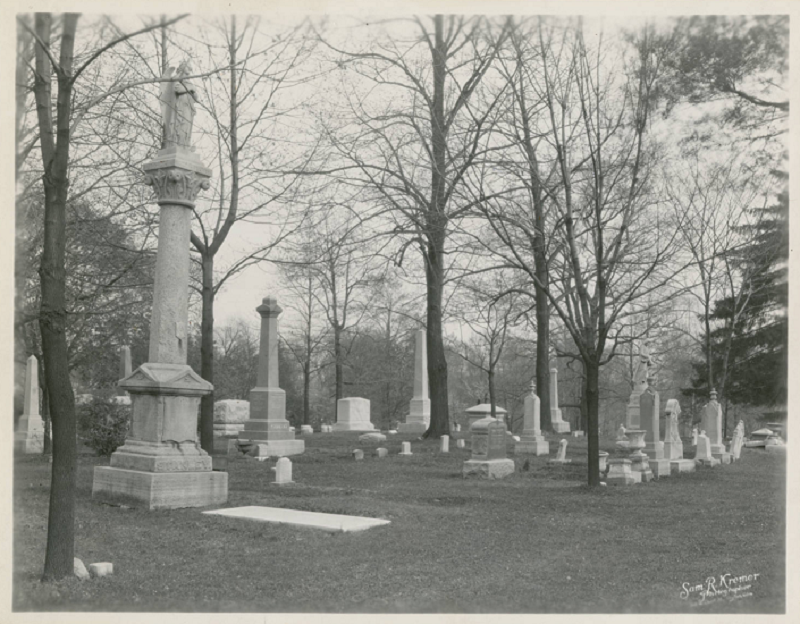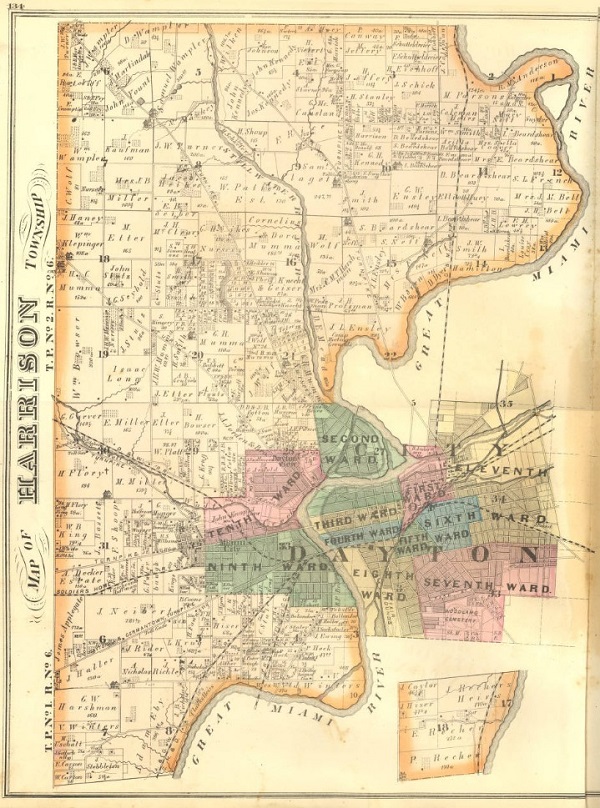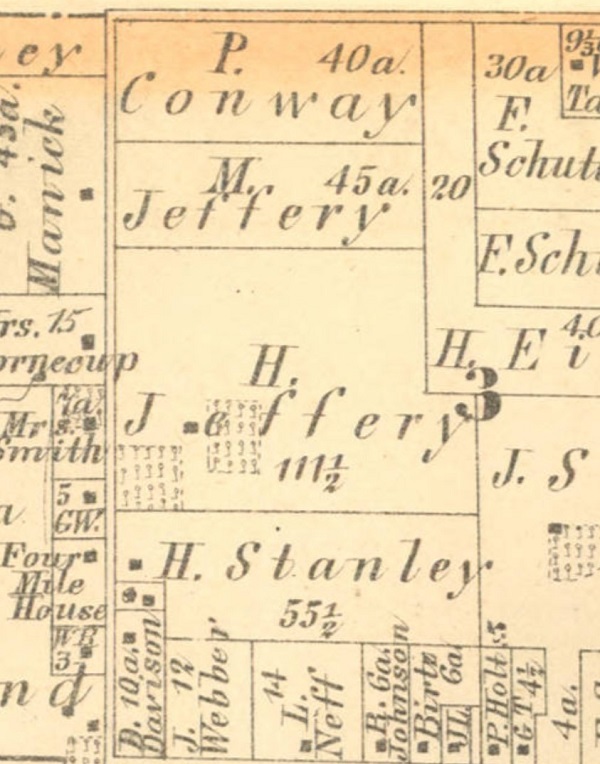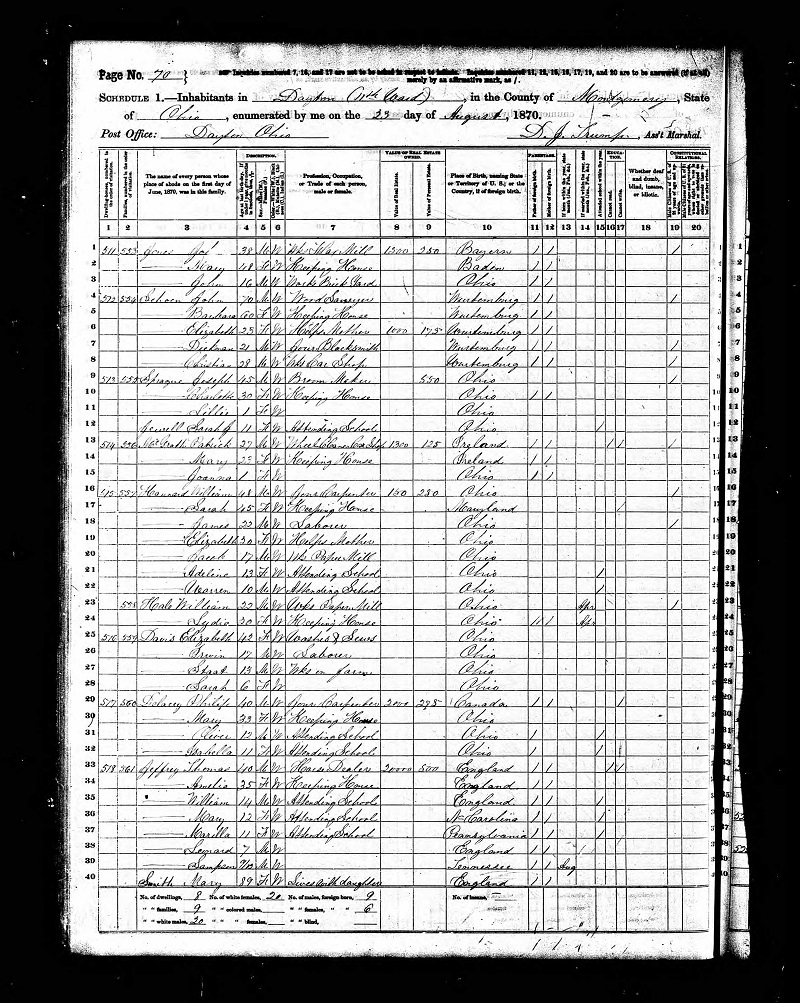University Libraries

Prospering Despite Prejudice: Dayton’s Romanichal Families and Their Voice in History
By Heidi Gauder and Kayla Harris
Owen and Harriet Stanley were nomads who moved from England to Dayton before the Civil War. Yet they stayed in the city and established a generational lineage, an enormous amount of capital and property, and a foothold in the establishment of mainstream institutions. Their success and persistence serves as both a lesson about immigration and an entry into questions about how and why racial and cultural identity matters.
The story of the Stanley family is one of prejudice and assimilation. Newspaper stories about the family invariably include the fact that they were “Gypsies,” not simply a family in the news. The writing is full of contradictions; on the one hand, journalists portray Romani families using prejudicial stereotypes, including that they’re thieves and kidnappers, while also reassuring readers that the members of the Stanley family are law-abiding citizens, as if that were unusual for them. The fact that the Stanleys traveled south in the winter (predating the “snowbird” culture by decades), maintained strong cultural practices within their community and retained traditional trades as fortunetellers and horse traders also indicated that they were, to some degree, seen as outsiders. Nonetheless, the general impression from newspaper stories at the time was that while the Stanley family was Romanichal, they were known as Dayton’s own “Gypsies.”
Romanichal culture
The Romani people have origins in northern India and were displaced in the 11th century by a series of Muslim invasions, after which they moved to Eastern Europe and southern Europe. Their language is rooted in ancient Sanskrit and continues to resemble other languages with Sanskrit origins, such as Hindi. Likewise, their music is similar to Indian folk music. The name for this group changes according to location: many from Great Britain call themselves Romanichal, while in German-speaking parts of Europe, they identify as Sinti; in France, they identify as Manush, and in central and Eastern Europe, Roma is a common designation. Romani is used to refer to the population as a whole.
The term “Gypsy,” however, is an exonym, a term imposed on an ethnic group by outsiders; the word origin is based on the term Egyptian, as Romani were mistakenly believed to be from that country as they moved westward from India. Given its pejorative connotations and its history as a racial slur, the term is used carefully in this story.
In his encyclopedia article on Romani Americans, the researcher Evan Heimlich notes that during the original Romani migration to Europe, “Their language and appearance set them apart from the resident populations; they repeatedly suffered harassment or worse at the hands of the local majority, and they were often denied the right to own land.” The Romani population has historically been treated poorly across Europe — deported, enslaved and part of Hitler’s genocide.
Although they have fared slightly better in the United States, Heimlich observed that Americans have tended to stereotype the Romani population, either in a romanticized narrative as exotic foreigners or in a criminalized one as thieves. Local headlines such as “Dusky Wanderers” (1883) and, more than 100 years later, “Police issue warnings on gypsies” (1989) point to the stereotypes that have followed the Romani for over a century in the United States. Dayton elites held debutante parties that imitated Romani dress, and other women’s groups, like the Monday Night Club, held “Gypsy”-themed events.
Family background
The extended Stanley family emigrated from England in 1854, led by the son Levi Stanley and 26 members of the Stanley, Harrison, and Cooper families. His father and mother, Owen and Harriet Stanley, arrived in 1856 with additional family members of the Stanley and Jeffrey families. A family biography in the 1882 History of Montgomery County, Ohio, Containing a History of the County, noted that “The Stanleys were quite numerous in England, and there boasted as being a better class of the traveling tribes, which we believe to be true, as will appear in the progress of this sketch.”
The heads of these extended families are often given the title of king or queen, although it is primarily in name only. Owen Stanley was the first “king” of this immigrant group and died in 1860, his wife Harriet having passed away three years earlier in 1857. Son Levi Stanley Sr. and wife Matilda became the next “king and queen”; Matilda passed away in 1878, and Levi died in 1908. Newspaper accounts of Matilda’s 1878 funeral estimated the attendance at 20,000 and were picked up in outlets across the country, including The New York Times. Their son Levi “Sugar” Stanley Jr. became the next head of the family. By the time of Sugar’s death in 1916, many members of the extended family had settled elsewhere.
Although the extended Stanley family maintained a nomadic lifestyle, they also accrued sufficient wealth to purchase tracts of land in northern Montgomery County, notably Harrison, Wayne, Mad River, and Butler townships. An 1875 county atlas shows parcels of land owned by the Jeffrey and Stanley families in what is now Northridge. According to Levi Stanley Sr.’s great-great-grandson, Harry Bryer, men of the Stanley family also joined fraternal organizations like the Masons and the Independent Order of Odd Fellows, another example of how this particular Romanichal family participated in the dominant culture.
U.S. Census records also attest, however, to some of the traditional aspects of the Romanichal lifestyle. For example, in 1870, Thomas Jeffrey, who was part of the extended family group that came to the United States in the 1860s, reported his occupation as horse dealer, while at the same time, he owned $20,000 in real estate (the equivalent of nearly $400,000 today). He and his wife were born in England, while his children were born in England, North Carolina, Tennessee, and Pennsylvania. He lived in Dayton’s Ward 11, which included part of north Dayton along Valley Street, the same area where Levi and Richard Stanley were recorded in the 1910 Census. Levi “Sugar” Stanley Jr., age 78, lived on Troy St and was a horse trader; son Richard Stanley, age 52, was also a horse trader and lived on Valley Street.
An incomplete story
Many of the newspaper articles that discuss the extended Stanley family in the Dayton area are dramatized for increased readership. Repeated stories of kidnappings or tax evasion draw upon played-out tropes and stereotypes. Sometimes the stories are about mundane aspects of life, but because they involve those who are deemed outsiders, they become newsworthy. As part of a doctoral dissertation from the University of Georgia, Melanie Covert writes, “Journalists who are able to capitalize on negative societal views of Romani do so for the sake of readership and popularity. Because it works, it continues, intensifying mainstream society’s negative associations with Romani lives.” The prevalence of articles in the Dayton newspapers and retellings of old stories confirm that.
Missing from these stories are the voices of the Romanichal people themselves. Archivists and librarians refer to this as a silence or gap in the historical record. In an August 1943 Journal Herald article from Dayton, an exasperated comment from a family member illustrates this point:
- "Please get it straight,” Mrs. Richard Stanley begged. “We’re not gypsies and we’ve been called that for so long. Please get it straight."
Despite Mrs. Stanley’s words, the family continues to be referred to as gypsies in subsequent stories to the present day. Beyond recognizing that the perspective of the Romani people is often missing from their own public history, it is also important to investigate why that is the case. Historical records are evidence of individuals and systems placing priority on the archiving of records of the dominant culture. For marginalized groups such as the Romani, that means less attention to preserving and recording material from their communities, leading to a one-sided narrative.
One may wonder whether the Stanley family attempted to counter their negative portrayals in the media. In a May 13, 1952, article, also in the Journal Herald, the journalist repeatedly ignores pleas to respect the family’s privacy:
- In fact, the only time the gypsies were ready to talk was when they spotted a photographer attempting to sneak a picture of the camp from a car. Then arms started waving, even among the youngsters, and a male spokesman gently threatened, "If you print a picture without our permission, the king will sue. He knows his rights. It’s an invasion of our privacy. How would you like us to walk into your home and take pictures?"
Why this is important
Evidence of a Romani presence in Dayton remains. Several Romanichal families are interred at Woodland Cemetery — the Stanley, Jeffrey, Joles and Harrison families, among others — and Matilda Stanley’s final resting place is marked with an impressive statue. Stanley Avenue is purported to be named after the Stanley family, as it cuts through where the family lived. Their land parcels documented in the 1875 county atlas are now part of the Northridge municipality, just north of Dayton; within Northridge is a street named “Gipsy Drive,” and on that street remains one of the family homesteads.
This family was clearly documented in the Census, and their surnames can be searched at Woodland Cemetery. They were likewise documented in the local newspapers, though the coverage perpetuated stereotypes.
Through these multiple sources and a thorough examination of what these sources don’t say, a more complete picture of the family begins to appear. The story of the Stanley family prompts us to think about other marginalized groups that have been assigned exonyms and challenges us to consider where we continue to use those terms today.
— Heidi Gauder is a professor in the University Libraries and coordinator of research and instruction. Kayla Harris is an assistant professor and a librarian/archivist in the Marian Library. Caroline Waldron, associate professor of history, also contributed to this story.
Sources
A note on sources: Many sources were located through the University Libraries’ resources and services or else found freely online. The authors made use of Gale Reference Online, HeritageQuest, New York Times Historical, interlibrary loan and institutional repositories.
Secondary Sources
Bryer, Harry. “The Ohio Stanleys: An American Romnicel Family.” Papers from the Sixth and Seventh Annual Meetings. Gypsy Lore Society, North American Chapter. New York. 1986.
Challa, Janaki. “Why Being 'Gypped' Hurts The Roma More Than It Hurts You.” NPR Code Switch. Dec. 30, 2013. https://www.npr.org/sections/codeswitch/2013/12/30/242429836/why-being-gypped-hurts-the-roma-more-than-it-hurts-you
Covert, Melanie, "Notorious but Invisible: How Romani Media Portrayals Invalidate Romani Identity and Existence in Mainstream Society.” Dissertation, Georgia State University, 2016. https://scholarworks.gsu.edu/sociology_diss/89
Heimlich, Evan. "Romani Americans." In Gale Encyclopedia of Multicultural America, 3rd ed., edited by Thomas Riggs, 1-13. Detroit, MI: Gale, 2014. Gale eBooks (accessed June 27, 2020). https://link-gale-com.libproxy.udayton.edu/apps/doc/CX3273300150/GVRL?u=dayt72472&sid=GVRL&xid=a772de19. (Note: authentication required for access.)
Stephens, Katherine Bernice. "American Gypsies: Immigration, Migration, Settlement." Master’s Thesis, California State University San Bernardino, 2003. https://scholarworks.lib.csusb.edu/etd-project/2354
The History of Montgomery County, Ohio, Containing a History of the County. United States: W. H. Beers & Co., 1882.
Newspaper sources
"Begin action to close gypsy estate," Dayton Herald. July 23, 1909, p. 15.
“Burial of a Gypsy Queen,” New York Times. Sept. 16, 1878, p. 1
Cummings, James. “Police issue warnings on gypsies.” Dayton Daily News. May 14, 1989, p. 15
“Dusky Wanderers.” Dayton Herald. June 7, 1883, p. 3.
“Gypsy costumes render Miss Marianna Talbott’s debut ball a striking affair.” Dayton Daily News. Dec. 24, 1916, p. 28.
“Mysterious Gypsies Living up to Name at Englewood Camp.” Journal Herald. May 13, 1952, p. 12.
“Stanley Clan (not Gypsies) Still Bury Dead in Dayton.” Dayton Herald. Aug. 1, 1943, p. 9.
"The Gypsies are comin'." Dayton Herald. April 14, 1888, p. 4.
"Two members of the Stanley gypsy tribe placed under arrest." Dayton Daily News. April 26, 1902, p. 13. [arrested for drunkenness and fast driving]



